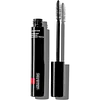What's inside
What's inside
 Key Ingredients
Key Ingredients

 Benefits
Benefits

 Concerns
Concerns

 Ingredients Side-by-side
Ingredients Side-by-side

Isododecane
EmollientWater
Skin ConditioningTrisiloxane
Skin ConditioningDimethicone Silylate
Ptfe
Sorbitan Olivate
EmulsifyingSorbitan Tristearate
EmulsifyingPolyisobutene
Kaolin
AbrasiveSilica Silylate
EmollientTrihydroxystearin
Skin ConditioningDiisopropyl Adipate
EmollientCopernicia Cerifera Wax
Quaternium-90 Bentonite
Microcrystalline Wax
Emulsion StabilisingHectorite
AbsorbentCholesterol
EmollientCaprylyl Glycol
EmollientPropylene Carbonate
SolventMethicone
EmollientHexylene Glycol
EmulsifyingMagnesium Salicylate
PreservativePhenoxyethanol
PreservativeMica
Cosmetic ColorantIron Oxides
CI 77891
Cosmetic ColorantCI 77742
Cosmetic ColorantCI 77288
Cosmetic ColorantCI 77289
Cosmetic ColorantCI 75470
Cosmetic ColorantCI 77510
Cosmetic ColorantCI 77163
Cosmetic ColorantCI 77007
Cosmetic ColorantIsododecane, Water, Trisiloxane, Dimethicone Silylate, Ptfe, Sorbitan Olivate, Sorbitan Tristearate, Polyisobutene, Kaolin, Silica Silylate, Trihydroxystearin, Diisopropyl Adipate, Copernicia Cerifera Wax, Quaternium-90 Bentonite, Microcrystalline Wax, Hectorite, Cholesterol, Caprylyl Glycol, Propylene Carbonate, Methicone, Hexylene Glycol, Magnesium Salicylate, Phenoxyethanol, Mica, Iron Oxides, CI 77891, CI 77742, CI 77288, CI 77289, CI 75470, CI 77510, CI 77163, CI 77007
Water
Skin ConditioningParaffin
PerfumingCopernicia Cerifera Cera
EmollientSteareth-20
CleansingCera Alba
EmollientAcacia Senegal Gum
MaskingAlcohol Denat.
AntimicrobialSteareth-2
EmulsifyingPotassium Cetyl Phosphate
EmulsifyingCetyl Alcohol
EmollientHydroxyethylcellulose
Emulsion StabilisingMadecassoside
AntioxidantSodium Polymethacrylate
Emulsion StabilisingSodium Dehydroacetate
PreservativeSodium Hyaluronate
HumectantSodium Chloride
MaskingSodium Bicarbonate
AbrasivePhenethyl Alcohol
MaskingPEG/PPG-17/18 Dimethicone
EmulsifyingArginine
MaskingPolysorbate 21
EmulsifyingPoloxamer 188
EmulsifyingPolyquaternium-10
Silica
AbrasiveSimethicone
EmollientPentylene Glycol
Skin ConditioningPanthenol
Skin Conditioning2-Oleamido-1,3-Octadecanediol
Skin ConditioningCaprylyl Glycol
EmollientDisodium EDTA
Methylsilanol/Silicate Crosspolymer
Skin ConditioningCitric Acid
BufferingPotassium Phosphate
BufferingPotassium Chloride
CI 77491
Cosmetic ColorantCI 77492
Cosmetic ColorantCI 77499
Cosmetic ColorantCI 75470
Cosmetic ColorantCI 77007
Cosmetic ColorantCI 77891
Cosmetic ColorantCI 77510
Cosmetic ColorantMica
Cosmetic ColorantWater, Paraffin, Copernicia Cerifera Cera, Steareth-20, Cera Alba, Acacia Senegal Gum, Alcohol Denat., Steareth-2, Potassium Cetyl Phosphate, Cetyl Alcohol, Hydroxyethylcellulose, Madecassoside, Sodium Polymethacrylate, Sodium Dehydroacetate, Sodium Hyaluronate, Sodium Chloride, Sodium Bicarbonate, Phenethyl Alcohol, PEG/PPG-17/18 Dimethicone, Arginine, Polysorbate 21, Poloxamer 188, Polyquaternium-10, Silica, Simethicone, Pentylene Glycol, Panthenol, 2-Oleamido-1,3-Octadecanediol, Caprylyl Glycol, Disodium EDTA, Methylsilanol/Silicate Crosspolymer, Citric Acid, Potassium Phosphate, Potassium Chloride, CI 77491, CI 77492, CI 77499, CI 75470, CI 77007, CI 77891, CI 77510, Mica
Ingredients Explained
These ingredients are found in both products.
Ingredients higher up in an ingredient list are typically present in a larger amount.
Caprylyl Glycol is a humectant and emollient, meaning it attracts and preserves moisture.
It is a common ingredient in many products, especially those designed to hydrate skin. The primary benefits are retaining moisture, skin softening, and promoting a healthy skin barrier.
Though Caprylyl Glycol is an alcohol derived from fatty acids, it is not the kind that can dry out skin.
This ingredient is also used as a preservative to extend the life of products. It has slight antimicrobial properties.
Learn more about Caprylyl GlycolCi 75470 is a bright-red pigment. It is AKA carmine.
Carmine is derived from insects such as the cochineal beetle. This ingredient has been used as a natural dye for over 2000 years.
This pigment is called Ultramarine blue lazurite. It gives a saturated blue color, but can be used to create other colors as well.
According to the manufacturer, it is usually made from kaolin, sodium sulfate, sodium carbonate, sulfur, and charcoal.
This ingredient is used to impart a blue color. It is not water-soluble.
It goes by two different names:
1. Ferric Ferrocyanide: a synthetic dark blue pigment
2. Ferric Ammonium Ferrocyanide: a synthetic blue pigment, also called Prussian blue
In the EU, both of these colors must be labeled as 'CI 77510'.
Learn more about CI 77510Ci 77891 is a white pigment from Titanium dioxide. It is naturally found in minerals such as rutile and ilmenite.
It's main function is to add a white color to cosmetics. It can also be mixed with other colors to create different shades.
Ci 77891 is commonly found in sunscreens due to its ability to block UV rays.
Learn more about CI 77891Mica is a naturally occurring mineral used to add shimmer and color in cosmetics. It can also help improve the texture of a product or give it an opaque, white/silver color.
Serecite is the name for very fine but ragged grains of mica.
This ingredient is often coated with metal oxides like titanium dioxide. Trace amounts of heavy metals may be found in mica, but these metals are not harmful in our personal products.
Mica has been used since prehistoric times throughout the world. Ancient Egyptian, Indian, Greek, Roman, Aztec, and Chinese civilizations have used mica.
Learn more about MicaWater. It's the most common cosmetic ingredient of all. You'll usually see it at the top of ingredient lists, meaning that it makes up the largest part of the product.
So why is it so popular? Water most often acts as a solvent - this means that it helps dissolve other ingredients into the formulation.
You'll also recognize water as that liquid we all need to stay alive. If you see this, drink a glass of water. Stay hydrated!
Learn more about Water